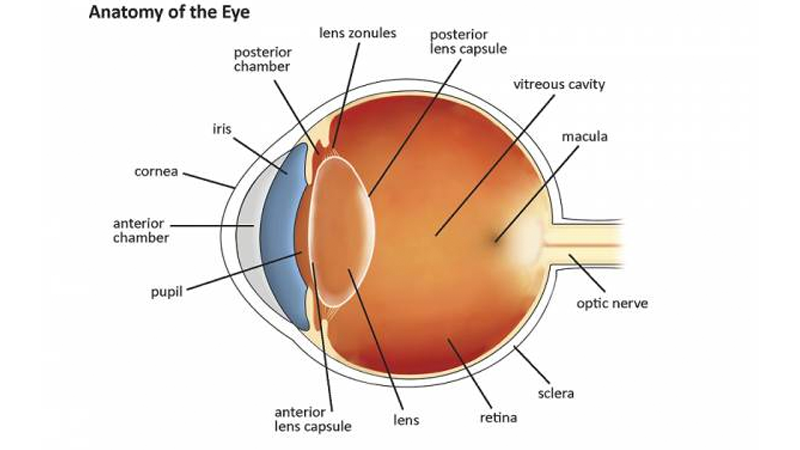If you are facing cataract surgery, one choice to consider is a premium Intraocular Lens (IOL). These premium lenses not only make your vision less clouded from cataracts, they can also remove your need to wear glasses and better align your vision to your lifestyle. While premium lenses are not covered by Medicare, it is worth considering as an upgrade to maximise your vision potential.
What is an Intraocular Lens (IOL)?
The natural lens of the eye sits in a capsule just behind the cornea. It works together with the cornea to adjust and focus light clearly on the retina so you can see objects both near and in the distance. The Intraocular Lens is the artificial lens that replaces the natural lens removed during cataract surgery.

What are the differences between standard and premium IOLs?
While there are many technical differences, the three most meaningful differences in visual outcomes are:
- Remove the need to wear glasses - standard IOLs are monofocal meaning they are generally set for distance vision only. Glasses are still required to see things up close.
- Overcoming astigmatism and other existing refractive errors - correcting these issues with the lens can also remove the need for glasses or additional corrective surgery.
- Clearer vision and better night vision - The shape of a premium lens better reflects the natural lens of the eye. This avoids small imperfections in vision that mainly affect vision in low-light conditions such as driving at night.
Why do premium lenses provide better vision options?
Premium IOLs better replicate the shape and function of the natural lens of the eye meaning the potential for clearer vision is higher in all environments. The natural lens of the eye is ‘aspheric’ in shape and this shape allows the light to better focus on the retina. Premium lenses maintain this aspheric shape whereas standard IOLs are ‘spherical’ in shape, mainly because they are easier and cheaper to produce.

The main downside of standard lenses is that they are monofocal, meaning they can only be set for one range of vision and glasses will need to be worn for focusing on thisngs up close. Also, the spherical shape can cause imperfections in vision, particularly noticeable in low-light conditions.
What lens do I get with regular cataract surgery?
Generally, Medicare and health fund policies will not cover premium IOLs. Before deciding what approach is taken for your surgery it is worth taking the time to understand your premium lens options and discuss with your eye surgeon what best fits your eye structure and vision requirements. Then an informed decision can be made on whether the investment in premium lenses is worthwhile.
What Premium IOLs are available for cataract surgery?
Premium intraocular lenses used in cataract surgery generally come under the following categories:
Multifocal IOLs - near and distance vision
Like accommodating lenses, multifocal lenses allow for near and distance vision. Multifocal lenses have different magnification points built in which allow the range of vision to be achieved. Multifocal lenses must be placed precisely to function properly and are as a result are often used in laser-assisted cataract surgery. Multifocal lenses tend to be less effective for distance vision than accommodating lenses and have also been known to increase glare.
Trifocal IOLs - near, intermediate and distance vision
Trifocal lenses are the most advanced lenses available today and allow near, intermediate and distance vision without any gaps in between. These lenses provide a higher chance of freedom from glasses after cataract surgery and are also used to correct presobyia (age-related long sightedness). Trifocal lenses are also available in a ‘toric’ version used to correct astigmatism.
Toric IOLs - correct astigmatism
If you have astigmatism, a Toric IOL may be able to correct this. With different powers in different parts of the lens, the lens can be aligned to correct astigmatism. Traditionally, what’s called Limbal Relaxing Incisions (LRI) or laser vision correction is often performed as part of cataract treatment to correct astigmatism. Using a Toric IOL reduces the likelihood of these additional procedures being necessary.
Modified Monovision – a different lens in each eye
Monovision is not so much the lens but the technique. Monovision places a near vision lens in one eye and a distance vision lens in the other. The brain begins to learn which eye to trust for each purpose and the resulting vision is seamless for near and distance vision. This is usually first tested using contact lenses to see how it feels. Multifocal or accommodating lenses are generally used in monovision.
Costs aside, it’s worthwhile to know your lens options prior to surgery. It could turn the negative of cataract diagnosis into to a positive, by freeing yourself from the need to wear glasses or be able to better perform the activities you need for work or play. Getting the right advice relevant to your circumstances from an experienced cataract surgeon is essential.
Envision Eye Centre specialise in all aspects of cataract surgery. We offer latest in trifocal lenses to give our patients the potential to be free from glasses to do what you love in life. Our team of Ophthalmologists can walk you through your intraocular lens options and give you the right advice to be certain that your investment in premium lenses will provide the vision you are looking for. Book an appointment with our team today to answer all your questions in a relaxed and anxiety-free environment.

